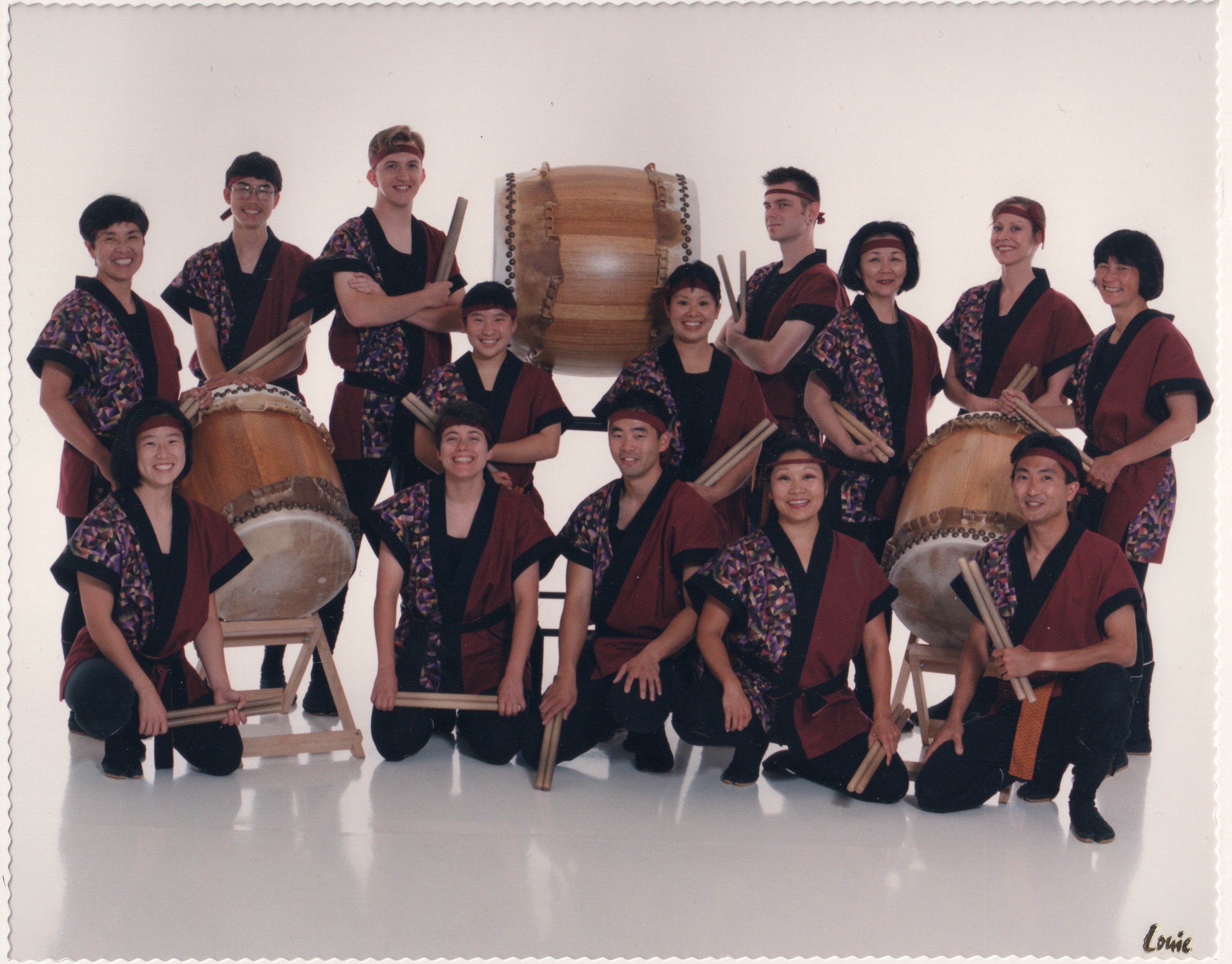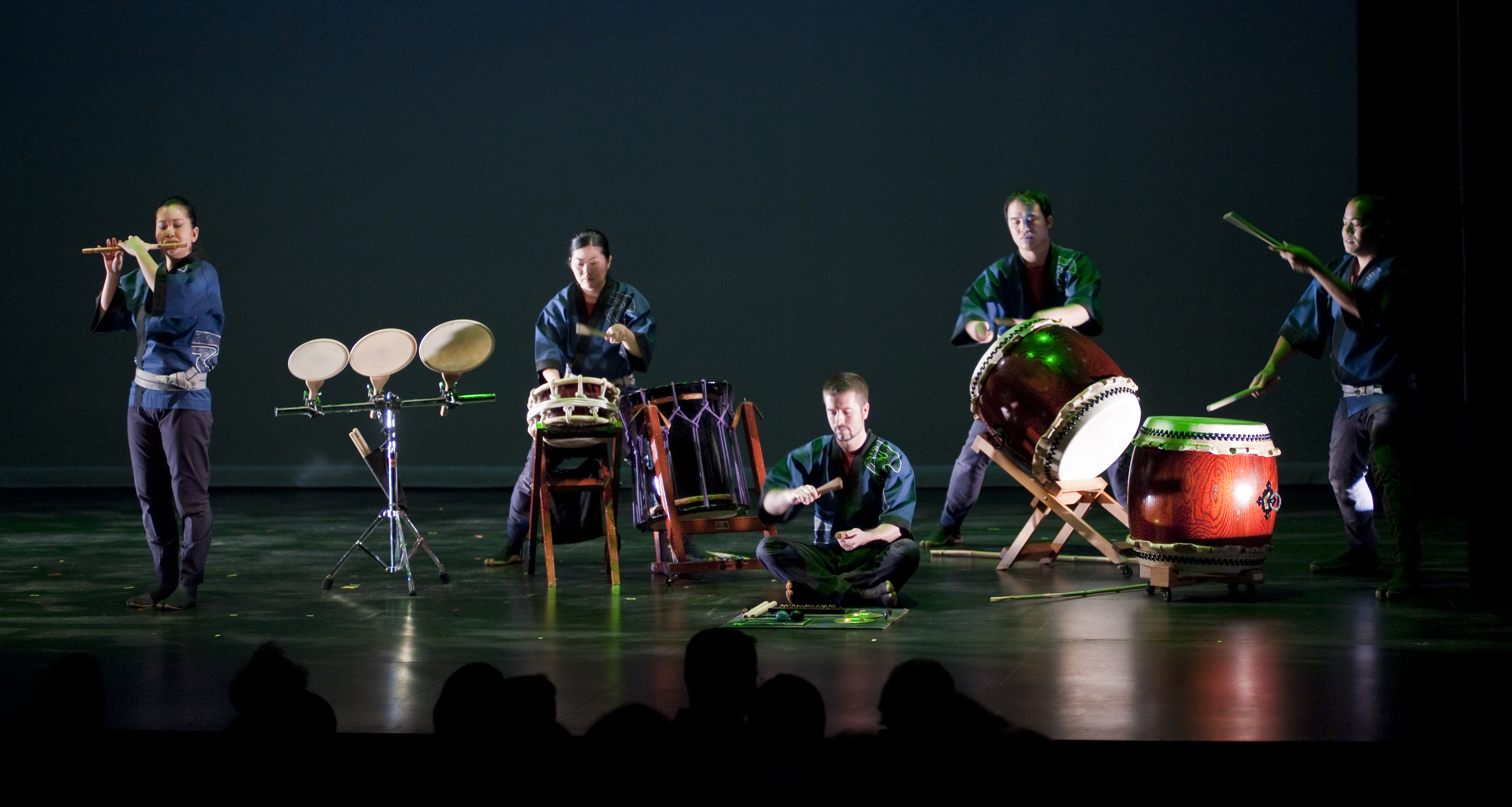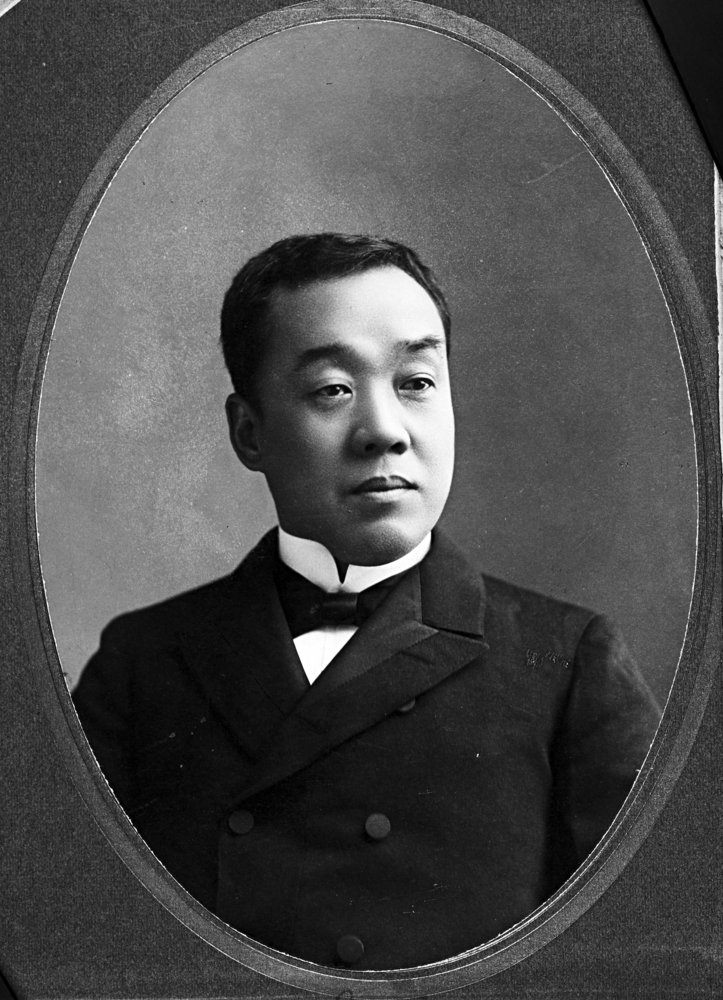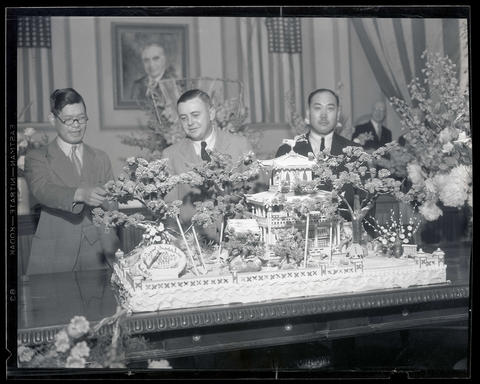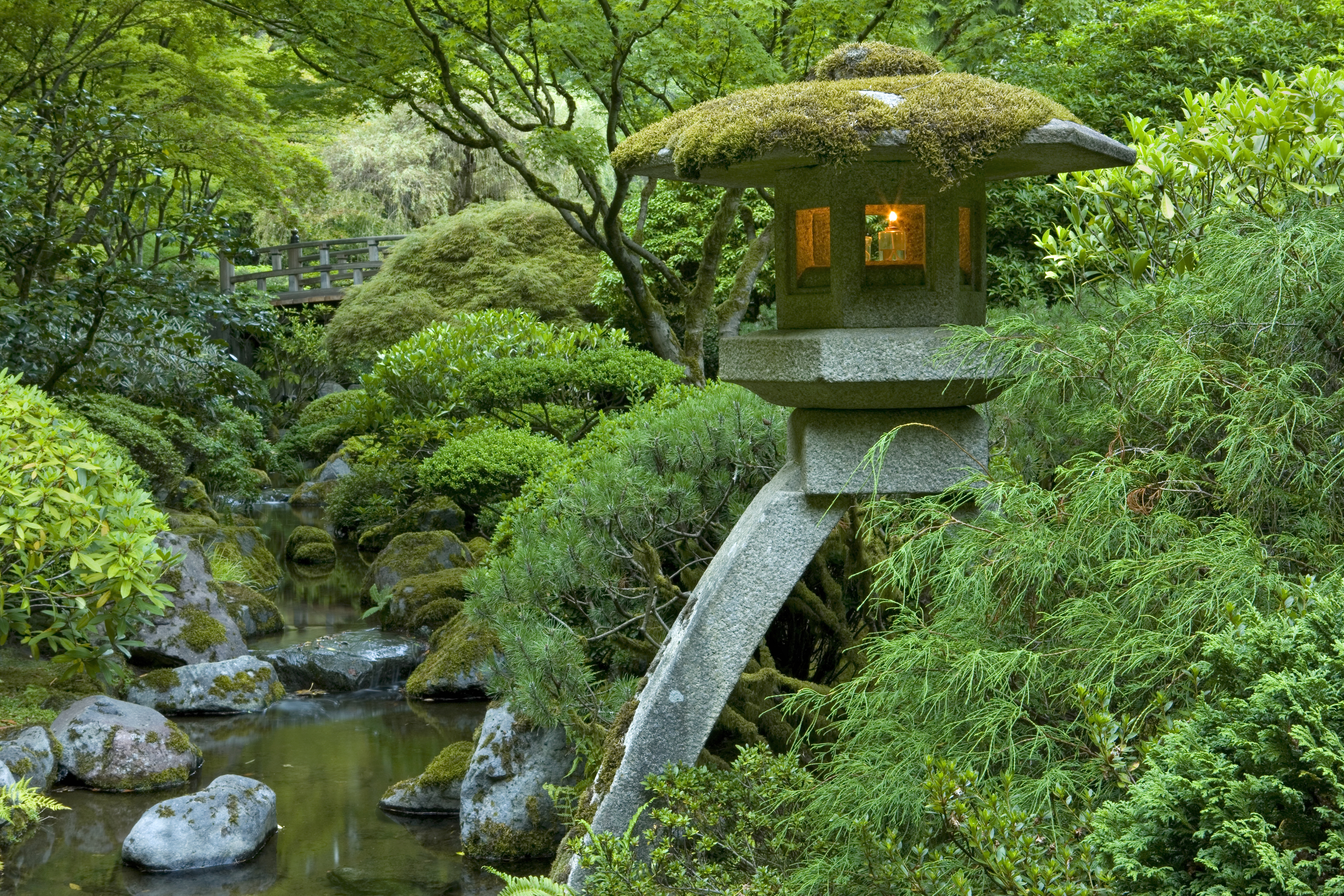Portland Taiko draws upon the tradition of Japanese ensemble drumming (taiko, drum), combined with a sense of Asian American identity and ethnic pride. Following the lead of North American taiko groups such as Kinnara Taiko in Los Angeles (1969) and San Jose Taiko (1973), Portland Taiko has incorporated movement, theatricality, and varied musical influences into its repertoire. The group has teamed with creative artists and community members to co-create new compositions, and in this way is recognized for its ongoing commitment to collaboration and innovation.
In 1993, Russel Baba and Jeanne Mercer of Shasta Taiko in Mt. Shasta, California, were invited to Portland to teach taiko rudiments to Japanese American children and adults. The following year, Stanford Taiko alumni Ann Ishimaru and Zack Semke moved to Portland and joined with Valerie Otani, June Schumann, and other activists to form Portland Taiko. The group held its first rehearsal in Irving City Park, playing on car tires and a homemade drum. With the financial support of the Japanese American community, Portland Taiko gradually acquired a full battery of drums and found a rehearsal site in northeast Portland.
The fledging group received widespread recognition after a performance with the Okinawan ensemble Zampa Ufujishi Daiko at the University of Portland’s Chiles Center in 1996. Ishimaru and Semke were hired as part-time staff members, and Portland Taiko developed an organizational structure comprised of a small performance ensemble, a larger community ensemble, and a children’s group called Tanuki Taiko.
Portland Taiko presented its first full-length concert in 1997 and performed for its peers at the 1999 North American Taiko Conference in Los Angeles. In 2000, the ensemble was selected by the American Composers Forum to represent Oregon in the Continental Harmony project, resulting in a collaboration with taiko artist Kenny Endo in a piece entitled “Wind, Water and Wood.” Portland Taiko developed its own repertoire, as well, and produced its first CD, Making Waves (2000), with compositions by Ishimaru, Semke, and Janice Choy-Weber.
The group incorporated storytelling in “Amaterasu,” worked with community members to co-create “Onkochishin,” and explored the unique combination of taiko and violin in “Pacific Voices.” These strategies became representative of Portland Taiko’s creative process: storytelling was expanded into theatrical shows; Asian American themes were explored in community-based works such as “Questions of Loyalty” and “A Place Called Home” (about World War II imprisonment); and the violin was used in “Salmon Ghost Song” and “Slipping Through My Fingers.”
In the early 2000s, Portland Taiko became a nonprofit organization, hired additional staff members, and toured North America. The group recorded its second CD, Big Bang (2003), and released its first DVD, TaikoKinesis (2005). Ishimaru and Semke relocated to the East Coast in 2005, and Teresa Enrico and Michelle Fujii were appointed the group’s co-directors, with Fujii assuming sole directorship in 2009. With her background in taiko and Japanese folk dance, Fujii incorporated movement in pieces such as “Itsuka” and “Ten Tiny Taiko Dances.” Portland Taiko reappeared at the North American Taiko Conference and released its third CD, Rhythms of Change (2009), which included the spirited composition “Korekara” and a virtuosic duet for Fujii and Toru Watanabe entitled “Futari.”
Throughout its history, Portland Taiko has collaborated with taiko groups; musicians and composers (Obo Addy and Byron Au Yong); storytellers and poets (Robert Kikuchi-Yngojo and Lawson Inada); and dancers (Minh Tran, BodyVox, and Kalabharathi). While the group has undergone significant changes in personnel, it continues to pursue a high level of artistry while maintaining a meaningful relationship to Oregon Japanese and other Asian American communities.
-
![]()
Portland Taiko, group photo.
Courtesy Portland Taiko
-
![]()
Portland Taiko.
Courtesy Rich Iwasaki
Related Entries
-
![Japanese Americans in Oregon]()
Japanese Americans in Oregon
Immigrants from the West Resting in the shade of the Gresham Pioneer C…
-
![Japanese Ancestral Society]()
Japanese Ancestral Society
In the early 1900s, spurred on largely by railroad construction, farmin…
-
Portland Japanese Garden
For more than forty-five years, the Portland Japanese Garden has offere…
Related Historical Records
Map This on the Oregon History WayFinder
The Oregon History Wayfinder is an interactive map that identifies significant places, people, and events in Oregon history.
Further Reading
“Portland Taiko.” Discover Nikkei. http://www.discovernikkei.org/en/taiko/groups/9/
Maves, Norm, Jr.. “Getting on ‘Ki.’” The Oregonian, August 8, 1996.
Rosenberg, Gigi. “Boom Times.” The Oregonian, September 23, 2004.



